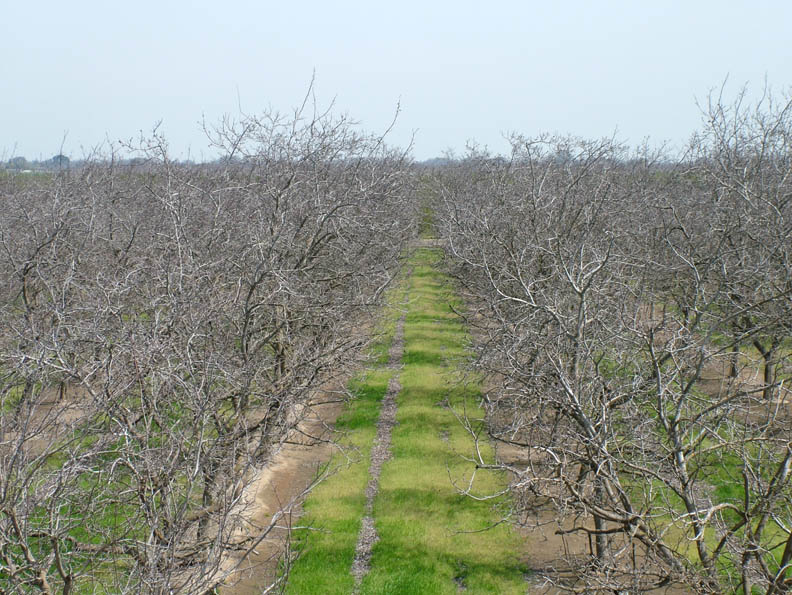
Cutting back on water earlier in the fall slows down the growth of trees growth and helps harden them off to better withstand cold temperatures. But, even if trees are fully dormant, extremely low temperatures during the winter can kill both young and mature walnut trees, notes Joe Connell, University of California Cooperative Extension farm advisor, Butte County.
“Drought conditions combined with sudden severely cold temperatures can make winter kill worse,” he writes in the December 2013, issue of Fruit and Nut Notes, a Sacramento Valley regional walnut newsletter published by the UC Cooperative Extension Service. “We do know that dry trees are more susceptible to cold damage so make sure trees are not stressed as they go into winter.”
One key to reducing any cold weather injury is to make sure trees are not stressed as they go into winter. In the absence of rain, that might include a light 1.5 to 2 inch irrigation in the fall that simulates typical rainfall patterns and if dry conditions persisted into December, gradually beginning to refill the soil profile with occasional 2-inch irrigations, Connell reports.
Now, following a very dry fall and a dry start to winter, significant rainfall will be needed to re-charge deep soil profiles in most walnut orchards, he says.
“Keep an eye on rainfall forecasts and amounts of rain received in your neighborhood so your irrigation timing doesn’t end up creating a condition where the orchard is too wet,” advises Connell. “Although unlikely if dry conditions persist, saturated soils can kill roots from water logging or can increase the chance of crown or root rots developing.”
Most of California’s walnut soils generally hold around 1.5 inches of available water per foot of depth, he says. “Trying to re-wet a 5-foot root zone in late February to early March, if it hasn’t rained much by then, isn’t a desirable situation. We still have some time for Mother Nature to resolve this problem. But, it bears watching.”
Connell recommends checking soil moisture as the winter progresses to see how deep the soil profile has been re-wetted to prevent dry soil in the root zone come spring.
“The ultimate goal is to make sure the soil reservoir is completely refilled either by rain or winter irrigations by the time your walnut trees begin to wake up in March,” he says.
More from Western Farm Press
AK-47 rifle was agriculture’s giant loss?
About the Author(s)
You May Also Like




